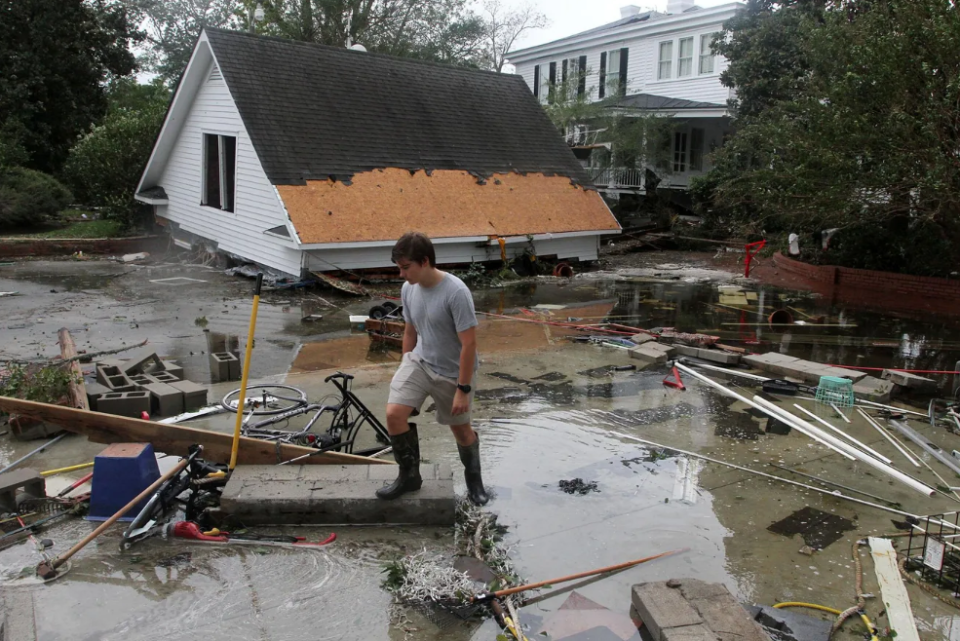Statistics say this is the year Craven County will see another hurricane
The start of the Atlantic hurricane season officially begins on June 1 and ends on November 30. Meteorologists expect another active season for 2022 but what does that mean for Craven County?
In 2016 and 2018, residents in eastern North Carolina witnessed two historical flooding events from the likes of Hurricane Matthew and Hurricane Florence. Four years later, the reminisces of Florence are still being felt in Craven.
It is not a question of "if" but a question of "when" will the next big storm hit our area. Just because the start of hurricane season isn't officially until June doesn't mean residents shouldn't begin to prepare now.
Named storms have formed prior to the official start of the hurricane season in half of the past 10-15 years, including each of the past seven years from 2015 to 2021, according to the National Weather Service.

After two of the most active hurricane seasons on record in 2020 and 2021, there are 19 tropical storms predicted to form, nine of which will become hurricanes, as previously reported by USA Today.
Of the nine predicted hurricanes, four are expected to spin into major hurricanes – Category 3, 4, or 5 – with sustained wind speeds of 111 mph or greater. There is a 71% chance at least one major hurricane will make landfall in the USA.
USA TODAY: CSU forecasters predict another active hurricane season with 19 tropical storms, 9 hurricanes
This year's names for storms are Alex, Bonnie, Colin, Danielle, Earl, Fiona, Gaston, Hermine, Ian, Julia, Karl, Lisa, Martin, Nicole, Owen, Paula, Richard, Shary, Tobias, Virginie, and Walter.
Will any of the predicted storms come our way? the answer: more than likely
Hurricanes have affected New Bern in seven out of the last 10 years, but that does not include what is considered tropical storms, tropical depressions, and other classifications.
A total of 84 tropical cyclones made landfall over the 169-year period from 1851 to 2020, which means NC averages a tropical cyclone every two years, according to the North Carolina Department of Natural Resources.
More: 5 things to know about plans to prevent, minimize future hurricane flooding
More: Three years after Florence: What is the future for Trent Court buildings?
Out of the 84 listed tropical storms, 52 of those were hurricanes. This means North Carolina averages one hurricane every three years.
However, after Florence, hurricane seasons have shown to be busier than statistics show with Hurricane Dorian in 2019 and Hurricane Isaias in 2020. Each brought minimal damage compared to Florence's rath but if statistics hold true as they did before Florence, it could mean residents will observe another storm in the next six to eight months.
A decade of storms: Hurricanes have affected New Bern in 7 out of the last 10 years
Make your emergency preparations now
A hurricane preparedness kit is a must for residents in eastern North Carolina.
Craven County Emergency Service's website includes links you can follow to find out if your home is in a flood zone. If it is, you should have an evacuation plan, knowing where you can go to wait out the storm.
It isn’t always necessary to leave the area – friends or families whose homes are not in the flood zone may be ready to take you in, and all the hurricane-prone counties have shelters set up where you need only bring the supplies you need.
You should also do an update check on your flood insurance.
As for your kit, FEMA suggests a gallon of water per person, per day, non-perishable, easily prepared food, a flashlight, and a battery-powered or hand crank radio. Also, include any medications and first aid kit, sanitation and hygiene items, important personal documents, a cell phone charger, and extra fuel.
FEMA advises a 3-day supply if you plan to evacuate and a 7-day supply for home.
Reporter Trevor Dunnell can be reached by email at tdunnell@newbernsj.com. Please consider supporting local journalism by signing up for a digital subscription.
This article originally appeared on Sun Journal: Craven County 2022 hurricane season predictions

